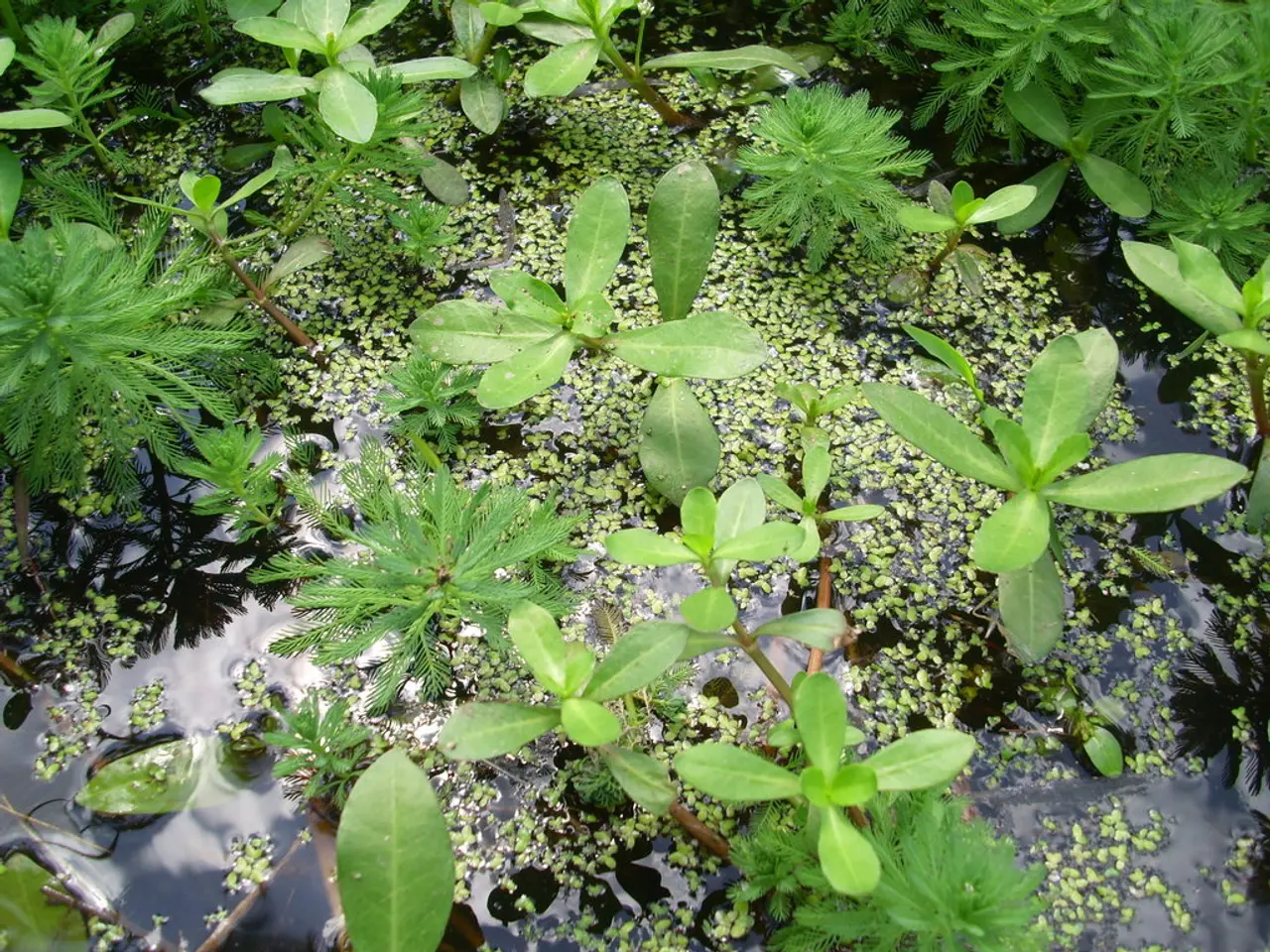Algal bloom in the New Pond, characterized by blue-tinted water
New Pond is currently experiencing an early bloom of blue-green algae, a phenomenon that typically occurs in mid to late August. These organisms, scientifically known as Cyanobacteria, are not algae as commonly thought.
While the presence of blue-green algae in New Pond does not pose an immediate direct health risk to humans, it is essential to be aware of the potential risks associated with these organisms. Some species of Cyanobacteria produce a toxin, posing a health risk to both animals and humans, particularly if the water is ingested.
In controlled environments like swimming lakes, health authorities take measures to ensure the water is safe when blue-green algae are present. However, since New Pond is not a swimming lake, there is initially no direct danger to humans from the presence of blue-green algae. Nevertheless, pets should be kept away from the water to avoid potential ingestion.
The unusual early appearance of blue-green algae in New Pond is likely related to the unusually warm and dry conditions in the spring, with the first summer month, June, being exceptionally warm and dry. High temperatures favor the spread of blue-green algae, and the current cool weather conditions are not deterring the spread in New Pond.
A "carpet-like spread" of blue-green algae is unlikely to contain toxins, but this does not mean all forms of blue-green algae are safe. Streaks of blue-green algae are appearing in the New Pond, and a metallic blue tint might become apparent later in the season.
It is important to note that the health risk from blue-green algae is mainly associated with drinking the water, not direct contact. However, when certain cyanobacteria thresholds are reached, measures such as public warnings, water use restrictions, or remediation efforts like aeration or chemical treatments may be implemented by environmental agencies, local government bodies, or scientific research organizations.
The quality of swimming lakes is controlled and they are closed by the health authority at certain threshold values. At the New Pond, precautionary measures are based on the fact that it is very unlikely that blue-green algae toxins will be present in a "carpet-like spread".
In conclusion, while the early appearance of blue-green algae in New Pond may be concerning, it is crucial to stay informed and follow any guidelines or warnings issued by local authorities. If you observe any unusual changes in the water quality or the presence of blue-green algae, it is advisable to contact your local environmental agency for further advice.
Read also:
- Peptide YY (PYY): Exploring its Role in Appetite Suppression, Intestinal Health, and Cognitive Links
- Toddler Health: Rotavirus Signs, Origins, and Potential Complications
- Digestive issues and heart discomfort: Root causes and associated health conditions
- House Infernos: Deadly Hazards Surpassing the Flames








